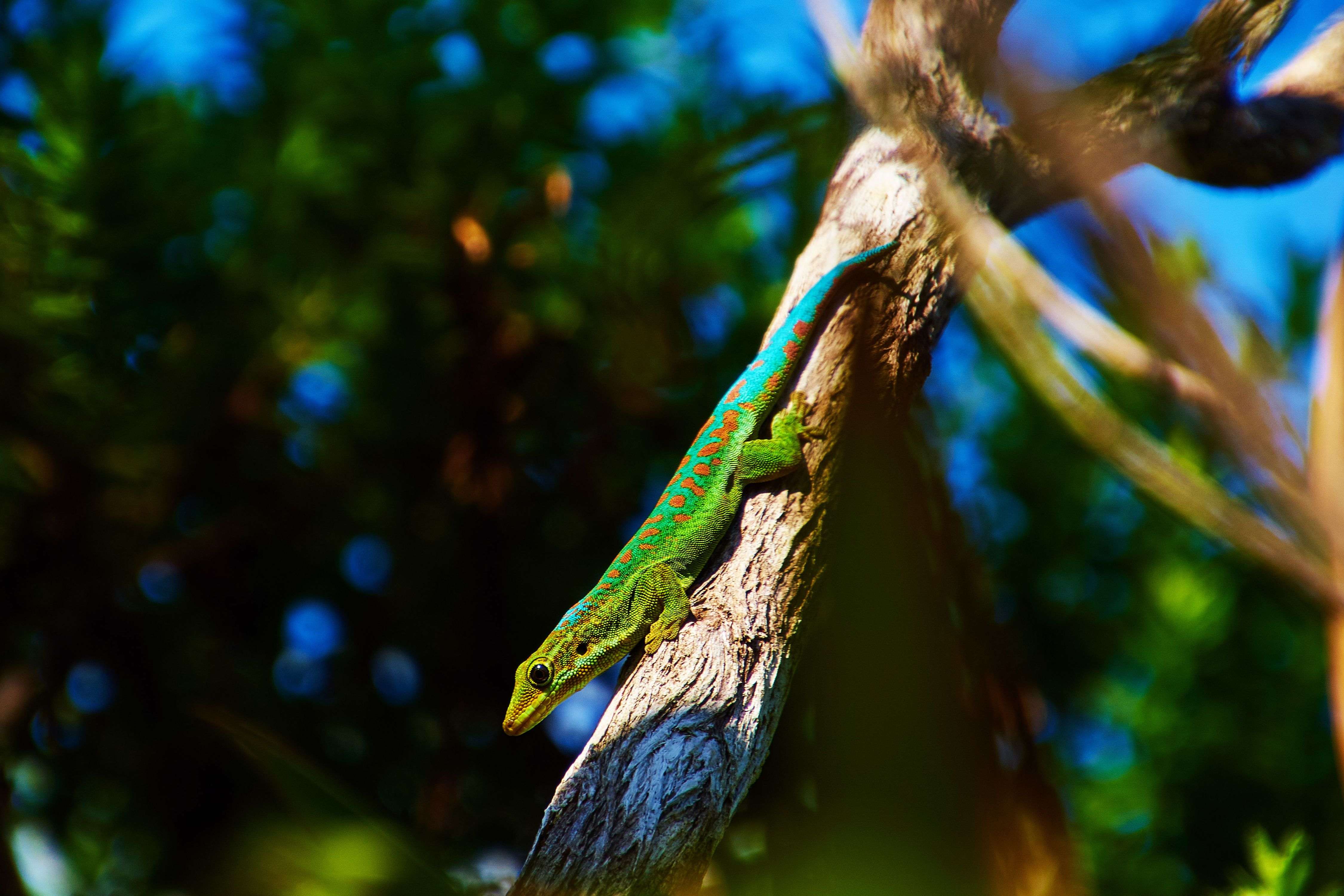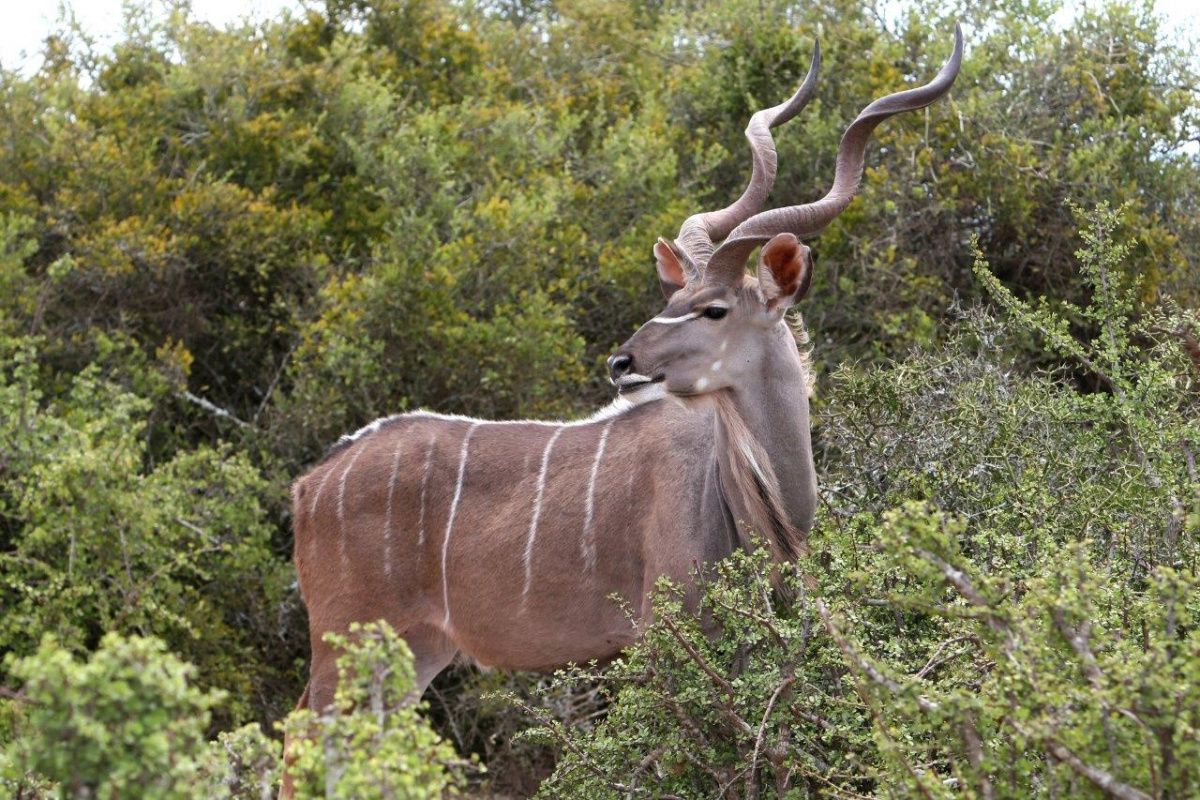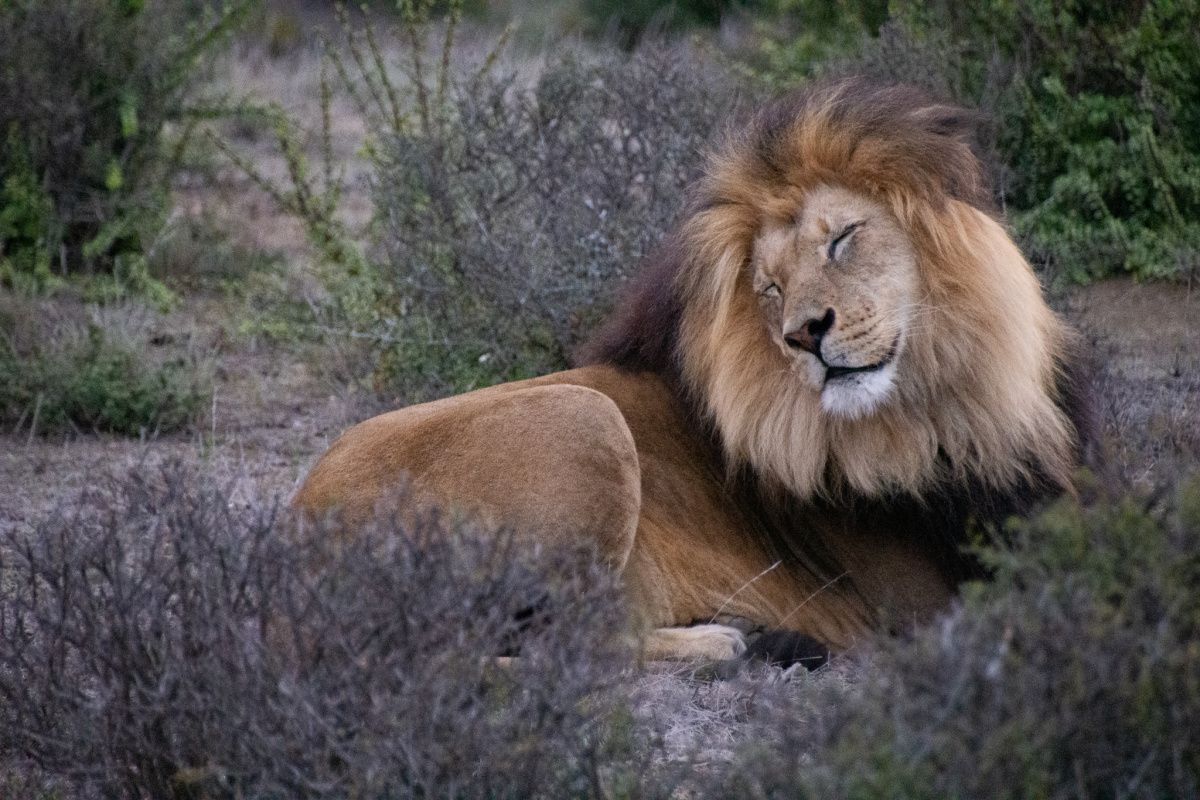
Biodiversity degradation and ecosystem collapse are among the top five global risks to society in the next ten years, according to the World Economic Forum's Global Risk Report 2023. In particular, forests are home to more than 80% of the world's terrestrial species whose survival is at risk if we do not take appropriate action.
Synonymous with biological diversity, the term biodiversity has been the subject of much debate among scientists. It then led to a dialogue with political decision-makers who finally proposed official definitions.
Indeed, in the context of the United Nations Conference on Environment and Development in Rio in 1992, the Convention on Biological Diversity (CBD) defined biodiversity as "the variability among living organisms from all sources including, among other things, terrestrial, marine and aquatic ecosystems and the ecological complexes of which they are part; this includes diversity within species, as well as between species and ecosystems. It covers all living species and organisms, bacteria, fauna, and flora, and the environment in which they live.
Understanding both the role of biodiversity in the functioning of ecosystems and the leading causes of biodiversity loss allows us to envisage future challenges and potential measures to be adopted to conserve biodiversity.

I. What is biodiversity?
Frogs, trees, fish... the International Union for Conservation of Nature categorizes almost 129,000 animal and plant species. Of these, no less than 35,765 are threatened with extinction, and 31 have been classified as "extinct," meaning they have disappeared into the wild.
More specifically, biodiversity encompasses the diverse life forms on earth - including various genes, species, ecosystems, and ecological processes. However, ecologists have classified biodiversity into three primary levels, considering their interrelationship:
1. Genetic diversity reflects the diversity of traits in a population - such as an eye color or disease resistance. It includes the characteristics of genes and their distribution within a species (intraspecific diversity) and between different species (interspecific diversity).
2. Species diversity is expressed by the number of living species, the position of species in the classification of living organisms, the distribution of several species per unit area, and the number of individuals of each species. Specific diversity is the diversity of species (interspecific diversity).
3. Ecosystem diversity refers to groups of organisms that form a functional unit through their strong interactions with each other and the surrounding environment. It reflects the richness of structural and functional relationships between species, populations, and with ecosystems.
The scientific definition of biodiversity considers the evolutionary dynamics of species within their ecosystems. Consequently, they depend on each other in a mutually beneficial relationship.
II. The services provided by natural ecosystems
Biodiversity must be preserved because natural ecosystems provide many services. Let us recall that an "ecosystem" represents a dynamic complex formed by communities of plants, animals, and microorganisms and their non-living environment. Through their interaction, they develop a functional unit́. An ecosystem's "good state" corresponds to the good physical, chemical, and biological state or the excellent physical, chemical, and biological quality of this ecosystem. It is thus capable of self-replicating or self-restoring. Species composition, structure, and ecological functions are also not compromised. Ecosystems provide various direct and indirect services to people: economic, social, and cultural benefits. We distinguish:
1/ Supply services, i.e., the supply of products from ecosystems: food, fiber, fuel, genetic resources, combustible raw materials (wood in particular), medicinal resources, biochemical effects, and freshwater.
2/ Regulating services, i.e., benefits derived from the regulation of ecosystem processes: resistance to invasion, herbivory, pollination, seed dispersal, climate regulation, pest regulation, disease regulation, protection against natural hazards, erosion regulation, water purification, protection of air qualitý, resilience against diseases, pests, and invasive species.
3/ Cultural services, i.e. recreational, spiritual, aesthetic benefits: recreational and aesthetic values, spiritual and religious values, knowledge system, education and inspiration, sense of place.
4/ Supporting services, i.e. services necessary for the production of all other ecosystem services: primary production, habitat provision, nutrient cycling, soil formation and retention, atmospheric oxygen production, water cycling.

III. Biodiversity under threat
Several non-governmental organizations have alerted public decision-makers about threatened biodiversity - notably by the term "hot spots." They have shown the areas where endemism and the degree of threat to species are present. Biodiversity should therefore benefit from priority conservation actions.
Indeed, biodiversity loss can be caused by several interconnected factors. They can then mutually have a knock-on effect on each other, increasing biodiversity loss.
1. Pollution
Atmospheric pollution influences, for example, the respiratory system of animals and harms their fertility. Furthermore, acid rain causes an accumulation of mucus in the gills of fish, leading to their suffocation. Soils exposed to acid rain also show the reduced activity of microbes, which influences the food chain and other life forms.
Water pollution harms biodiversity. For example, pesticides, such as fertilizers, can accumulate in water bodies and break them. The flow of water is impeded. Fertilizers are not washed away. The animals in the water bodies ingest them and have difficulties reproducing.
Soil pollution harms biodiversity. Soils contaminated with heavy metals impact the well-being and health of microorganisms essential to maintaining life. Heavy metals are not easily degraded because they are in excess in the soil and accumulated by plants. In addition, the increased presence of fertilizers in the ground leads to the vigorous growth of grass species, which stifles the growth of wildflowers, essential for bees and other pollinating insects.
Light pollution also harms biodiversity. For example, street lights at night, building lights, and vehicle headlights mainly affect nocturnal animals such as bats. Their feeding activity decreases, and their exit from the roost can be delayed by artificial lighting. The behavior of moths is also primarily affected by light pollution. Butterflies are prey for other species and pollinators for many species.
Noise pollution also hurts biodiversity. For example, birds living in noisier areas begin to lay fewer eggs because the noise masks the birds' important territorial calls.
2. The introduction of invasive species
Alien species introduced into a new environment can compete with and displace local species. As a result, some of them become invasive species and negatively affect the ecosystem. These invasive species disrupt the native ecosystem in many ways:
- habitat modification
- importation of pathogens
- destruction of plants in the native ecosystem
- hybridization with native species resulting in a decline in genetic diversity
3. Habitat destruction
Natural habitats are destroyed, degraded or fragmented. In this context, the species becomes unable to maintain its native ecosystem, ultimately leading to biodiversity loss.
In the future, the world population is expected to continue to grow. This increases the demand for land for human activities due to urbanization, agriculture, and resource exploitation. This may lead to accelerated loss of natural habitats and reduced biodiversity.
4. Overfishing and overexploitation of natural resources
Excessive overfishing and overexploitation of fauna and flora will deplete species populations and contribute to biodiversity loss. Nearly one-third of the world's endangered vertebrates are vulnerable to overexploitation.
5. Climate change
Climate and biodiversity issues are closely linked, and an integrated approach is needed to protect both.
Global warming and climate fluctuations are disrupting ecosystems and affecting species' life cycles, resulting in biodiversity loss. Biodiversity plays a crucial role in climate regulation by capturing carbon dioxide, influencing hydrological processes, and providing essential ecosystem services.
In 2021, the IPBES and the IPCC called for a joint approach to biodiversity and climate change.
Indeed, engaging in climate action and preserving biodiversity has a double advantage:
- on mitigation by promoting natural carbon sinks
- and on adaptation by using living organisms' functions to strengthen our territories' resilience to climate change. These solutions, also known as nature-based solutions (NBS), not only limit global warming by contributing to the goal of zero net emissions but also increase the resilience of territories by promoting the conservation and protection of biodiversity.
Similarly, the fight against climate change can positively impact biodiversity by encouraging various solutions: sustainable agricultural practices, reducing deforestation, and promoting renewable energy sources.

IV. The consequences of biodiversity loss
The progressive decline of biodiversity can have serious repercussions, in particular:
- Ecosystem degradation: when species are lost, natural balances can be disrupted, leading to ecosystem degradation.
- Impacts on ecosystem services: ecosystems provide ecological services such as water purification, crop pollination, climate regulation, and flood protection, which can be affected by biodiversity loss.
- Social and economic impacts: biodiversity loss can severely affect local populations, mainly if they depend on wildlife for their livelihoods or economy. The loss of biodiversity has substantial economic consequences. For example, in France, 42% of the value of stocks and bonds held by French financial institutions are issued by companies highly or highly dependent on at least one ecosystem service. Global economic losses due to natural disasters reached 313 billion euros worldwide in 2022, of which 131 billion were insured, the fifth most costly year for the sector - 10 billion euros in 2022 in France. Climatic phenomena have cost an average of 3.5 billion euros annually. The year 2022 was also the worst since 1999.
- Decrease in food production: some animal and plant species are essential for global food production. Their loss can have an impact on food security.
- Loss of pharmacopeia: Many plant species are used to produce medicines. Their loss can lead to a reduction in the availability of these medicines.
Conclusion
In the face of declining biodiversity, COP15 in Montreal, Canada, provided elements for adopting an ambitious and inclusive post-2020 Global Biodiversity Framework. The Kunming-Montreal Global Biodiversity Framework (GFB) includes four long-term goals for 2050 and 23 action-oriented targets resulting from two weeks of intense negotiations. Among the targets for 2030, countries have committed to protecting at least 30% of the world's land and marine areas while recognizing indigenous and traditional territories. In addition, private and public actors must reduce their impacts on nature and decrease their dependence on ecosystem services and follow a common path to restore biodiversity and combat climate change. Through its programs, Reforest'Action offers solutions that preserve and restore biodiversity through various techniques.
References :
Aon, “Weather, Climate and Catastrophe Insight”, Report, 2023, https://www.aon.com/getmedia/f34ec133-3175-406c-9e0b-25cea768c5cf/202301...
Banque de France, Un « printemps silencieux » pour le système financier ? Vers une estimation des risques financiers liés à la biodiversité en France, document de travail n° 826, 2021.
Cadre mondial de la biodiversité de Kunming-Montréal : https://www.cbd.int/doc/c/422b/4d8b/4a36d91b3402753214c72ac6/cop-15-l-23-fr.pdf
CBD, 2022 Biodiversity and Nature, close but not quite the same : https://www.cbd.int/idb/activities/difference-biodiversitynature.pdf
CISL, 2022. Integrating Nature: The case for action on nature related financial risks. https://www.cisl.cam.ac.uk/resources/ publications/integrating-nature-case-action-nature-relatedfinancial-risks
Convention sur la diversité biologique, 1992 : https://www.cbd.int/convention/text/Dasgupta, P. (2021), The Economics of Biodiversity: The Dasgupta Review. (London: HM Treasury)
Díaz, S. et al., (2019) Summary for policymakers of the global assessment report on biodiversity and ecosystem services of the Intergovernmental Science-Policy Platform on Biodiversity and Ecosystem Services; IPBES.
https://www.ipbes.net/system/tdf/ipbes_7_10_add-1-_advance_0.pdf?file=1&type=node&id=35245
FAO. 2022. In Brief to The State of the World’s Forests 2022. Forest pathways for green recovery and building inclusive, resilient, and sustainable economies. Rome, FAO, https://doi.org/10.4060/cb9363en
IPBES (2018) The IPBES assessment report on land degradation and restoration. Montanarella, L., Scholes, R., and Brainich, A. (eds.). Secretariat of the Intergovernmental Science-Policy Platform on Biodiversity and Ecosystem Services, Bonn, Germany. 744 pages. https://doi.org/10.5281/zenodo.3237392
IPBES (2019): Summary for policymakers of the global assessment report on biodiversity and ecosystem services of the Intergovernmental Science-Policy Platform on Biodiversity and Ecosystem Services. S. Díaz, J. Settele, E. S. Brondízio E.S., H. T. Ngo, M. Guèze, J. Agard, A. Arneth, P. Balvanera,
IPBES (2020): Workshop Report on Biodiversity and Pandemics of the Intergovernmental Platform on Biodiversity and Ecosystem Services. Daszak, P., das Neves, C., Amuasi, J., Hayman, D., Kuiken, T., Roche, B., Zambrana-Torrelio, C., Buss, P., Dundarova, H., Feferholtz, Y., Foldvari, G., Igbinosa, E., Junglen, S., Liu, Q., Suzan, G., Uhart, M., Wannous, C., Woolaston, K., Mosig Reidl, P., O'Brien, K., Pascual, U., Stoett, P., Li, H., Ngo, H. T., IPBES secretariat, Bonn, Germany, DOI:10.5281/zenodo.4147317
IPBES-IPCC co-sponsored workshop, Biodiversity and Climate Change, Workshop Report, 2021, https://ipbes.net/sites/default/files/2021-06/20210609_workshop_report_embargo_3pm_CEST_10_june_0.pdf
IPBES (2022): Summary for Policymakers of the Thematic Assessment Report on the Sustainable Use of Wild Species of the Intergovernmental Science-Policy Platform on Biodiversity and Ecosystem Services. Fromentin, J.M., Emery, M.R., Donaldson, J., Danner, M.C., Hallosserie, A., Kieling, D., Balachander, G., Barron, E.S., Chaudhary, R.P., Gasalla, M., Halmy, M., Hicks, C., Park, M.S., Parlee, B., Rice, J., Ticktin, T., and Tittensor, D. (eds.). IPBES secrétariat, Bonn, Germany. https://doi.org/10.5281/zenodo.6425599
Linders TEW, Schaffner U, Eschen R, Abebe A, Choge SK, et al. (2019) Direct and indirect effects of invasive species: Biodiversity loss is a major mechanism by which an invasive tree affects ecosystem functioning. J Ecol 107: 2660-2672: https://bit.ly/3qARzMb
Muller, S. & N. Robbins. 2022. Just Nature How finance can support a just transition at the interface of action on climate and biodiversity. https://www.lse.ac.uk/granthaminstitute/ publication/just-nature-finance-just-transition-climate-andbiodiversity-2022/
OCDE, (2020) Biodiversité et réponse économique au COVID 19 : assurer une reprise verte et résiliente ; https://www.oecd.org/coronavirus/policy-responses/biodiversite-et-reponse-economique-au-covid-19-assurer-une-reprise-verte-et-resiliente-0c20417e/
Rockström, J., W. Steffen, K. Noone, Å. Persson, F. S. Chapin, III, E. Lambin, T. M. Lenton, M. Scheffer, C. Folke, H. Schellnhuber, B. Nykvist, C. A. De Wit, T. Hughes, S. van der Leeuw, H. Rodhe, S. Sörlin, P. K. Snyder, R. Costanza, U. Svedin, M. Falkenmark, L. Karlberg, R. W. Corell, V. J. Fabry, J. Hansen, B. Walker, D. Liverman, K. Richardson, P. Crutzen, and J. Foley. 2009. Planetary boundaries:exploring the safe operating space for humanity. Ecology and Society 14(2): 32 [online] URL: http://www.ecologyandsociety.org/vol14/iss2/art32/
Romain Svartzman, Etienne Espagne, Julien Gauthey, Paul Hadji-Lazaro, Mathilde Salin, Thomas Allen, Joshua Berger, Julien Calas, Antoine Godin, Antoine Vallier (2021) A "Silent Spring" for the Financial System? Exploring Biodiversity-Related Financial Risks in France. Banque de France; https://publications.banque-france.fr/sites/default/files/medias/documents/wp826.pdf
SBTN biodiversity hub, working guidance: https:// sciencebasedtargetsnetwork.org/issue-hubs/biodiversity
TNFD 2022 TNFD. 2022. The TNFD Draft Disclosure Recommendations. https://framework.tnfd.global/disclosurerecommendations/
WHO and CBD (2015). Connecting global priorities: biodiversity and human health - a state of knowledge review. Geneva: World Health Organization and Secretariat of the Convention on Biological Diversity; https://www.cbd.int/health/stateofknowledge/
WHO (2021) Nature, biodiversity, and health: an overview of interconnections. Copenhagen: WHO Regional Office for Europe; Licence: CC BY-NC-SA 3.0 IGO
World Economic Forum, “Global Risks Report 2023”, 11 janvier 2023, https://fr.weforum.org/reports